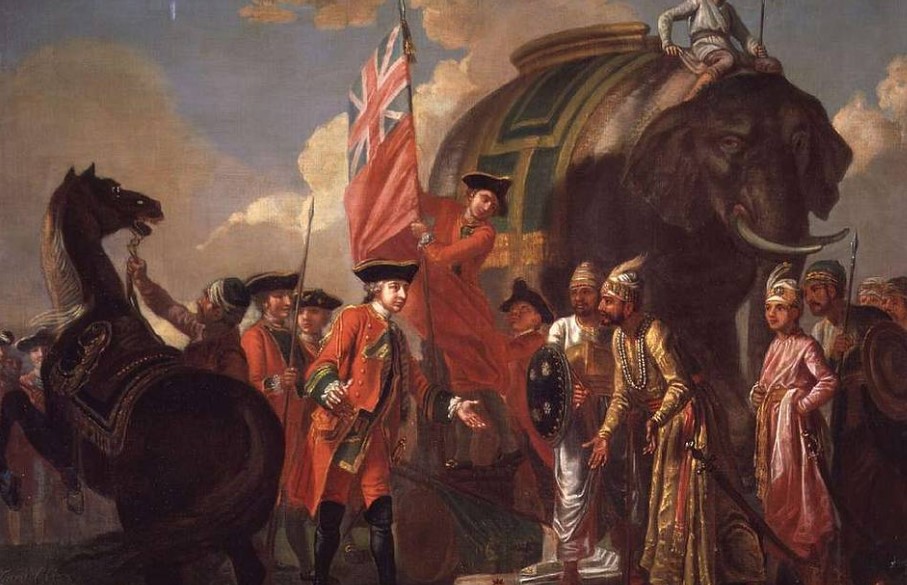
Modern History MCQs – 1 (Arrival of Europeans in India)
Most important multiple choice questions from the chapter – Arrival of Europeans in India MCQs.
Home » UPSC Study Materials » Prelims Express » Chapterwise MCQs » Modern History MCQs » Modern History MCQs – 5 (Governor Generals of India)
Governor Generals of India MCQs with answers and explanations for all examinations.
1. Which among the following acts changed the position of Governor of Bengal to the Governor-General of Bengal ?
(a) Regulating Act of 1773
(b) The Charter Act of 1833
(c) The Charter Act of 1813
(d) None of the Above
Correct Answer – (a) Regulating Act of 1773
2. Consider the following statements regarding Warren Hastings ?
1. He ended the Dual System put forth by Robert Clive.
2. He shifted the Treasury from Murshidabad to Calcutta.
Select the correct answer using the codes given below:
(a) 1 only
(b) 2 only
(c) Both 1 & 2
(d) None of the above
Correct Answer – (c) Both 1 & 2
3. Which among the following Governor-General established Asiatic Society of Bengal ?
(a) Warren Hastings
(b) Lord Cornwallis
(c) Lord Wellesley
(d) None of the above
Correct Answer – (a) Warren Hastings
4. Which among the following Governor-General established the Permanent Settlement system in Bengal ?
(a) Warren Hastings
(b) Lord Cornwallis
(c) Lord Wellesley
(d) None of the above
Correct Answer – (b) Lord Cornwallis
5. The Third Anglo-Mysore war was fought during the tenure of which among the following Governor-General of Bengal ?
(a) Warren Hastings
(b) Lord Cornwallis
(c) Lord Wellesley
(d) None of the above
Correct Answer – (b) Lord Cornwallis
6. The Fourth Anglo Mysore war was fought during the tenure of which among the following Governor-General of Bengal ?
(a) Warren Hastings
(b) Lord Cornwallis
(c) Lord Wellesley
(d) None of the above
Correct Answer – (c) Lord Wellesley
7. The Subsidiary Alliance System was introduced by which among the following Governor-Generals of Bengal ?
(a) Warren Hastings
(b) Lord Cornwallis
(c) Lord Wellesley
(d) None of the above
Correct Answer – (c) Lord Wellesley
8. Which among the following was the first newspaper published in India ?
(a) Bengal Gazette
(b) The Calcutta Chronicle
(c) The Bombay Herald
(d) None of the above
Correct Answer – (a) Bengal Gazette
9. Censorship of Press Act was introduced by which among the following Governor-Generals of Bengal ?
(a) Warren Hastings
(b) Lord Cornwallis
(c) Lord Wellesley
(d) None of the above
Correct Answer – (c) Lord Wellesley
10. Censorship of the Press Act was abolished by which among the following Governor-Generals of Bengal ?
(a) Warren Hastings
(b) Lord Cornwallis
(c) Lord Wellesley
(d) Lord Hastings
Correct Answer – (d) Lord Hastings
11. Which among the following was the first vernacular newspaper published in India ?
(a) Sambad Kaumudi
(b) Samachar Darpan
(c) Neel Darpan
(d) None of the above
Correct Answer – (b) Samachar Darpan
12. The practice of Sati was formally abolished by which among the following Governor-Generals of Bengal ?
(a) Lord William Bentinck
(b) Lord Cornwallis
(c) Lord Wellesley
(d) Lord Hastings
Correct Answer – (a) Lord William Bentinck
13. Which among the following acts changed the position of Governor-General of Bengal to Governor-General of India ?
(a) Regulating Act of 1773
(b) The Charter Act of 1833
(c) The Charter Act of 1813
(d) None of the Above
Correct Answer – (b) The Charter Act of 1833
14. The Doctrine of Lapse was introduced by which among the following Governor-Generals of India ?
(a) Warren Hastings
(b) Lord Cornwallis
(c) Lord Wellesley
(d) Lord Dalhousie
Correct Answer – (d) Lord Dalhousie
More questions are coming soon. Join us on Whatsapp for latest updates: Join CivilsCracker on Whatsapp

Most important multiple choice questions from the chapter – Arrival of Europeans in India MCQs.

Most important multiple choice questions from the chapter – Battle of Plassey and Battle of Buxar MCQs.

Most important multiple choice questions from the chapter – Social and Religious Reform Movements MCQs.

Most important multiple choice questions from the chapter – Anglo Mysore Wars and Anglo Maratha Wars MCQs.

Most important multiple choice questions from the chapter – Revolt of 1857 MCQs.

Most important multiple choice questions from the chapter – Organizations before Indian National Congress MCQs.

Most important multiple choice questions from the chapter – Important Sessions of Indian National Congress MCQs.

Most important multiple choice questions from the chapter – Partition of Bengal and Swadeshi Movement MCQs.

Most important multiple choice questions from the chapter – Surat Split and Lucknow Pact MCQs.

Most important multiple choice questions from the chapter – Arrival of Gandhi and Jallianwala Bagh Massacre MCQs.
We are adding new Notes, Chapterwise MCQs, Quizzes, Previous Years Questions everyday
We are adding new Notes, Chapterwise MCQs, Quizzes, Previous Years Questions everyday